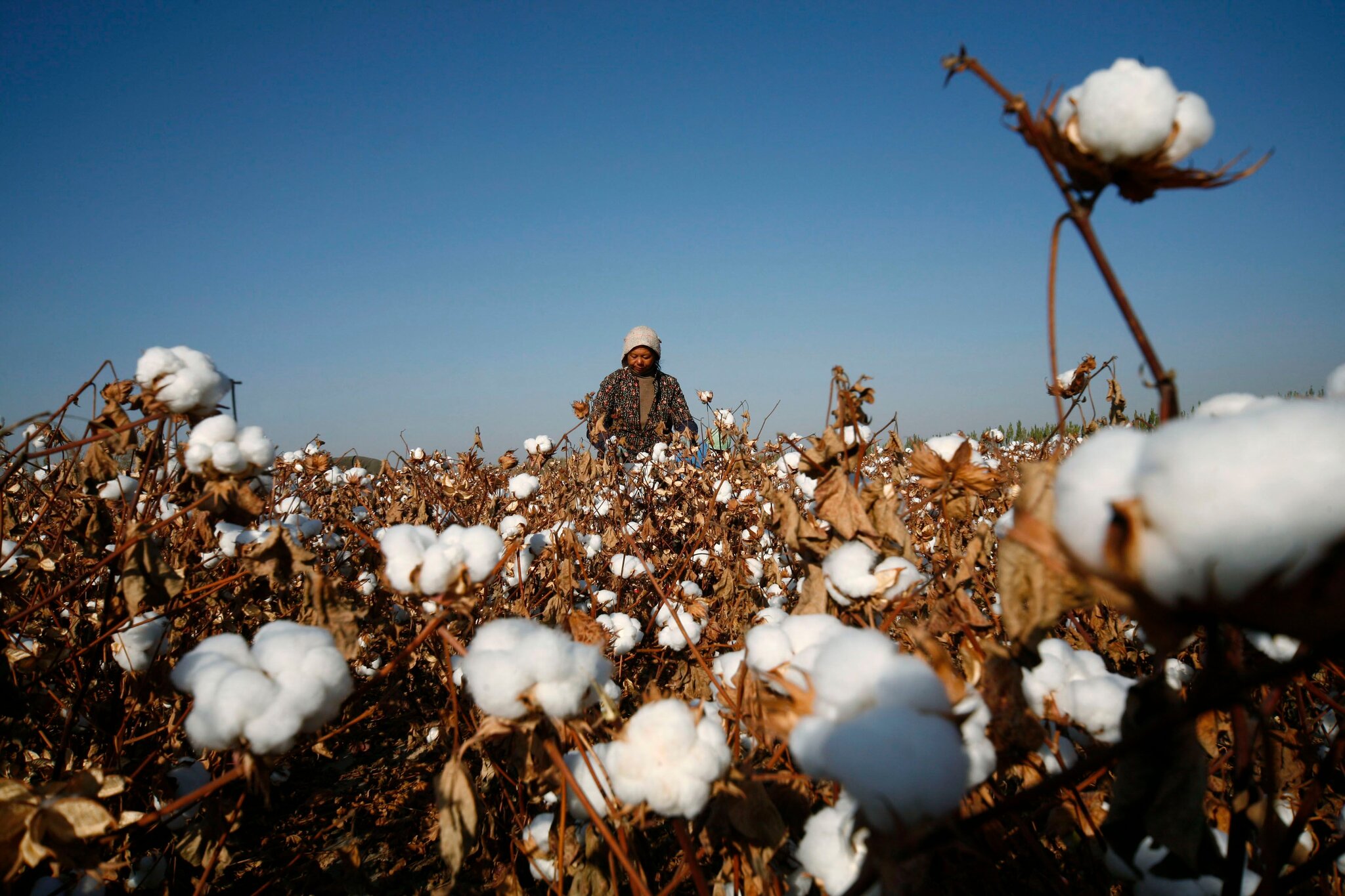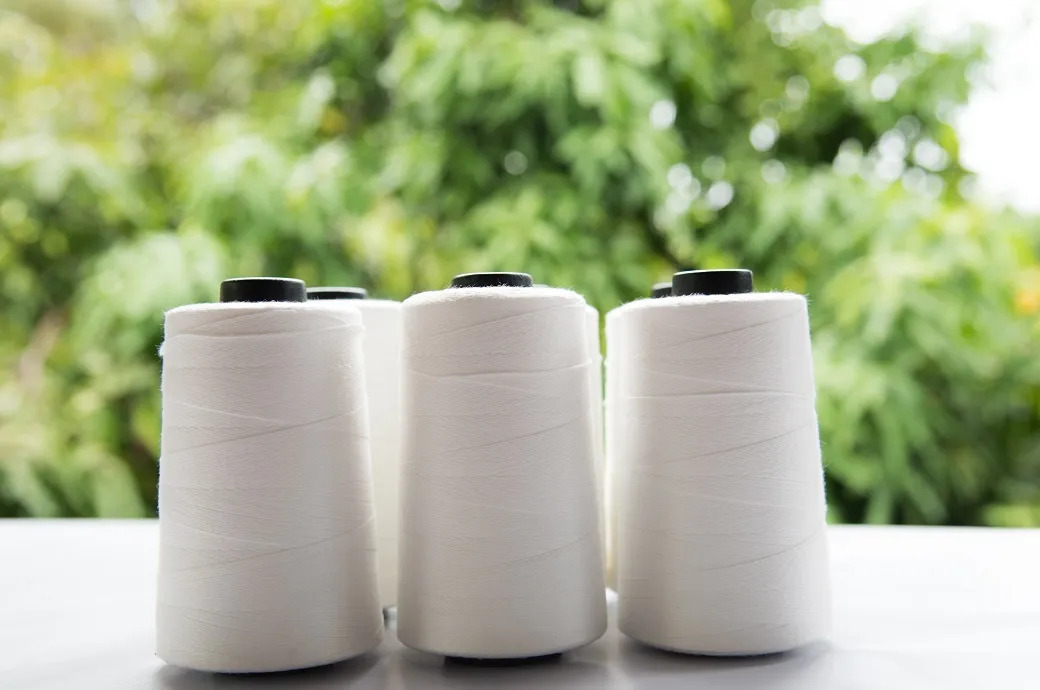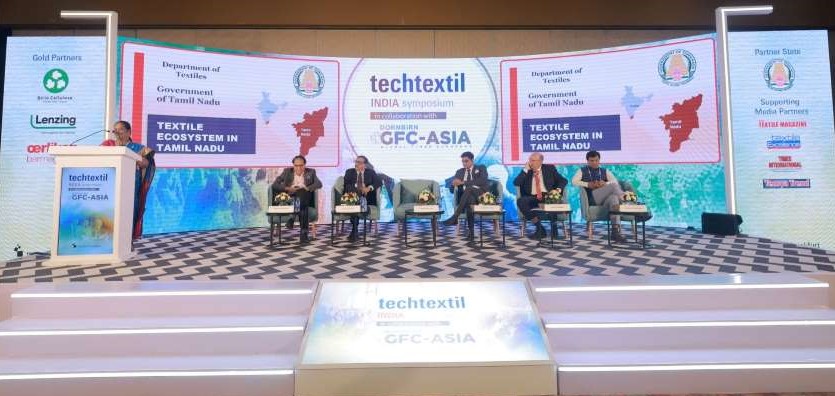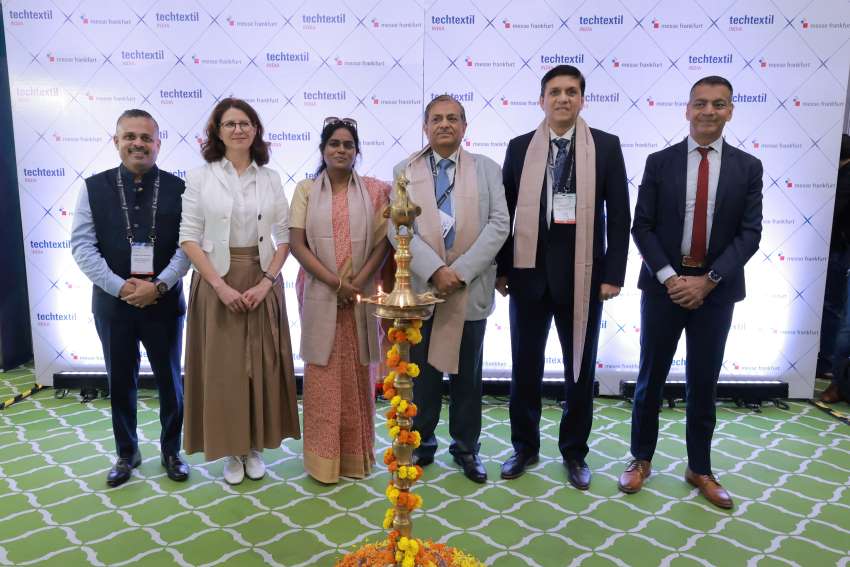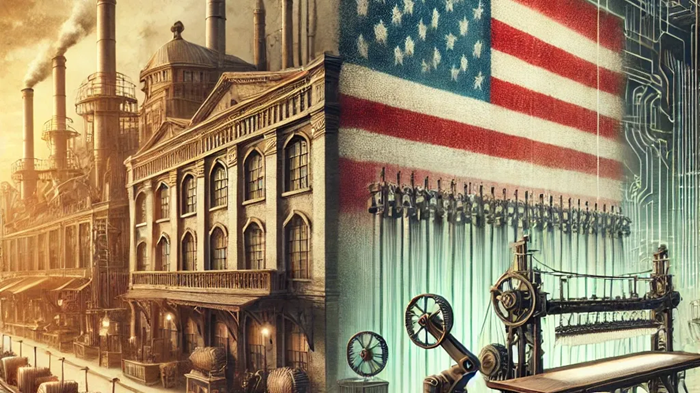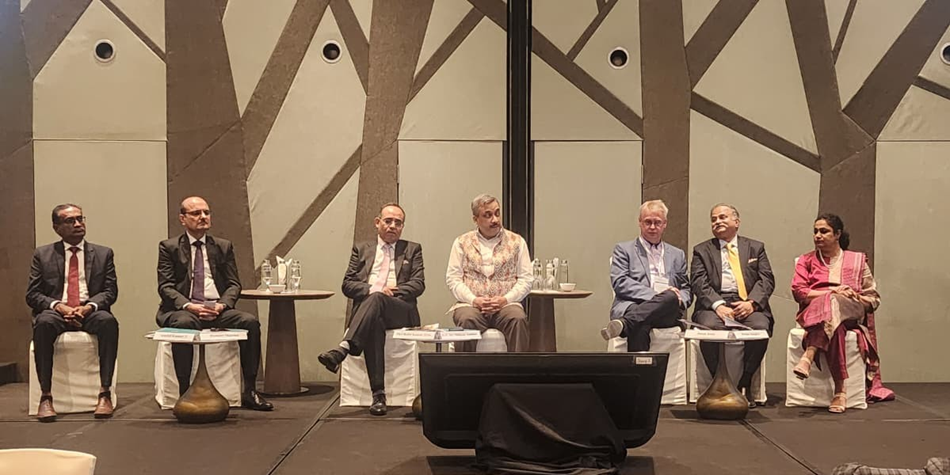FW
"Zimbabwe’s cotton industry sees red as cotton production has hit all time low with estimated output falling below 30 000 tons this year. This has been the lowest yield since 1992, after the country faced serious drought. Yields will be significantly lower than 102 000 tons achieved during prior season and 352 000 tonnes, a record output achieved four seasons ago. It has prompted experts to be sceptical about the sector’s future sustainability."
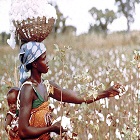
Zimbabwe’s cotton industry sees red as cotton production has hit all time low with estimated output falling below 30 000 tons this year. This has been the lowest yield since 1992, after the country faced serious drought. Yields will be significantly lower than 102 000 tons achieved during prior season and 352 000 tonnes, a record output achieved four seasons ago. It has prompted experts to be sceptical about the sector’s future sustainability.
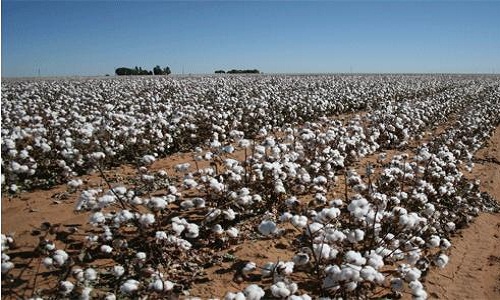
Once one of the top producer’s of cotton globally has now gone down with production level up to 10 per cent of normal volume. Experts believe, opening up the cotton sector to new players was the death knell for Zimbabwean cotton. Zimbabwe’s cotton sector was built around the Cottco inputs credit scheme, which started in 1992 and ensured that farmers received adequate funding, agronomic support and quality incentives resulting in 95 per cent of production coming through contract farming schemes. However, the contract scheme failed due to rampant side-marketing and ineffective government regulations. Hence, cotton production is no longer a profitable option under contract farming. Today, with low yields, side marketing and low inputs support cotton sector is facing dwindling production levels.
Challenges remain despite new policy measures
To infuse life into the sector, a new model for cotton production is almost imperative. Establishment of state controlled monopoly has been one such measure taken up by the government recently. The policy is expected to result in higher yields due to the supply of correct inputs package and agronomical support. Moreover, growth in overall yield is expected to drive viability and improve debt repayment. It will also reinstate seasonal pool price and quality bonus payments,, which will go a long in improving crop quality and sector viability, thereby enabling the country to regain its reputation for top quality.
In spite of correcting measures there are huge challenges for Zimbabwe in terms of international competitiveness due to cotton subsidies. Consequently, the country cannot compete on an equal footing with other global producers. This way, normal market forces cannot achieve competitiveness for the industry. As such, it is imperative that efficiencies are maximised through economies of scale arising from the contracting of a single operator in the mould of the former Cotton Marketing Board (CMB). This instantly resolves the challenge of side-marketing. The creation of a viable investment case enables a virtuous cycle of adequate input packages, improved grower viability, improved debt repayment, higher crop size, improved operational efficiencies and higher investment in the sector.
Subsidy and value addition to boost global rankings
Recently the government gave out free inputs worth $25 and has indicted similar schemes for this year. However, inputs subsidies may not be an effective policy intervention in the absence of a viable pricing incentive for the farmer. The rampant abuse of free inputs has been a major reason of failure for this scheme. In the absence of correct agronomic practices such as the right plant population and adherence to planting deadlines, inputs will not achieve the desired effect of reviving the industry. Processing of cotton into yarn, fabrics and garments represents the core industry for the country in terms of job creation and economic development. There is need, therefore, to craft policies which attract investment into the sector.
Ready-made garment exporters believe the government’s decision to do away with import duty on specialty man-made fabric used as inputs for exports can help them compete better with smaller countries such as Bangladesh and Vietnam. These countries have the dual advantage of low operating costs and preferential access to markets such as the European Union.
The Apparel Export Promotion Council (AEPC) will soon organise a nationwide drive to spread awareness about the new special advance authorisation scheme announced by the Centre last month for exporters to take advantage of it.
Just because of higher labour cost, absence of cluster forming and inability to attract women workforce to reduce labour costs, India has been losing to competitors like Bangladesh and Vietnam. Banking on trade agreements and low manufacturing overheads, these countries have started to pose a serious threat.
According to industry figures, India’s ready-made garments exports last year were worth $17.1 billion while Bangladesh’s garments exports in 2015-16 were valued at $28 billion. The government’s decision to allow duty-free import of specialty man-made fabric will help immensely in increasing Indian exporters’ competitive edge.
The additional benefit to exporters of high-end garments that use specialty fabric could roughly help offset 2-3 per cent import duties in the Western markets. Going by the fact that garment exporters from India pay on an average an import duty of five per cent in the EU when countries such as Bangladesh pay zero duty. In the US, the import duty on garments range from nine per cent to 20 per cent.
The garment industry in Los Angeles is currently going through a transition period. The tag “Made in China” is becoming more prevalent as minimum wage rises and domestic sewing and textile companies struggle to survive dwindling profit margins.
In comparison to rising expenses and costs to manufacture garments in Los Angeles, countries such as China apply lax legal policies in favor of businesses to produce more garments using fewer financial resources. As a result, many garment manufacturers that focus their business on quantity rather than quality in the wholesale market are now relying heavily toward foreign-based sewing and textile companies to keep their businesses afloat.
Unfortunately it is not all rosy for these garment manufacturers importing textiles from foreign companies. For one, most foreign textile companies do not guarantee copyright ownership of textiles and their designs. As a result, a number of garment manufacturers are being sued for copyright infringements and end up defending not just their claims, but also their retail customers’ claims pursuant to their indemnity agreements.
In an effort to circumvent any copyright issues, some domestic garment manufacturers have taken questionable measures to protect their business interests. The most common way has been to modify or change certain portions of the original textile design purchased from foreign textile companies to try to make it more original. In most instances, such revision efforts have not been successful where there has been substantially similar textile design that already had been registered with the copyright office.
Africa has become a strategic hub for China as a supplier of cheap raw materials. But the continent’s textile manufacturers and retailers continue to grapple with the colossal incursion of comparatively-cheap Chinese textiles and apparel. This competition has forced local firms to downsize or close. Textile industries have declined in output, lost market share, profits and over 75,000 jobs as a result of cheaper Chinese textiles on the local market.
As Africa embraces these cheap textile imports, jobs and revenues are exported along with social and economic ramifications. The country has recorded relatively-low levels of technological advancement and investment in capital. Consequently, the clothing and textile industry registers low productivity, slow turnaround time, and a weak value chain. In contrast, Chinese textile manufacturers have critically exploited their provisional assets such as cheap labor, technological upgrade, capital and skills training.
As severe poverty infests greater part of Africa, the low per capita purchasing power dictates that the demand for China’s low-price export goods will continue to scale-up. Chinese retailers have added a brutal fight to the already-severe situation by establishing local retail chains for their home manufacturers since Africa is one of the finest destinations for China’s finished products.
China remained by far the EU’s largest clothing supplier in the first three months of 2016 though a number of other countries gained market share. EU clothing imports from Bangladesh rose by 4.2 per cent in the whole of 2015 and were up by 8 per cent in the first three months of 2016. As a result, Bangladesh’s share of EU clothing imports reached 24.6 per cent. Imports from Cambodia shot up by 12.6 per cent in 2015 and were up by 17.7 per cent in the first three months of 2016. Imports from Pakistan rose by 6.5 per cent in 2015 and were up by 8.4 per cent in the first three months of 2016. And imports from Vietnam increased by 3.2 per cent in 2015 and were up by 1.6 per cent in the first three months of 2016.
The average price of EU clothing imports from China was the third lowest among the EU’s leading ten suppliers in 2015.
Productivity in China is superior to that enjoyed by its counterparts in south-east Asia and south Asia. China has a much better infrastructure than most other major clothing manufacturing countries in Asia. Its supply chain is more efficient and manufacturers in the country are able to guarantee timely delivery of their products.
British luxury house Burberry has been recognised by the Dow Jones as the leader in sustainability. This is the second time the UK Company is included in the report, reflecting its commitment to sustainable practices and the success of its corporate responsibility program. Burberry achieved the best scores of the industry in areas of customer relationship management, tax strategy, environmental reporting, overall environmental dimension, overall social dimension and stakeholder engagement.
The Dow Jones Sustainability Indices were launched in 1999, providing the first global sustainability benchmark. The metric is used as a tool by many investors to analyse the many economic, environmental and social factors that are relevant to a company’s success.
Burberry was founded in 1856 and is a leading luxury brand with a global business. The assortment covers a broad spectrum from classic trench coats to extravagant, innovative fashion collections. The range covers men’s wear, women’s wear, children’s wear, coats, dresses, shoes, accessories, bags, scarves, beauty and fragrance.
Burberry is best known for its trench coat. Devised for British troops fighting in World War I, it was fitted with epaulets and D-rings for grenades. Later, the double-breasted weather-beater was adapted for civilian wear, fitted with storm flaps and lined with the signature Burberry check.
The global output of digitally printed textile is growing at a considerable rate. While the share of digitally printed textile is insignificant, rising pressure for shipping products in a minimum possible time is likely to boost its share considerably by next year. This, as per a report of QYResearchReports.com, in turn will fuel demand for digital printing machine all over the world. The repository of the website titled ‘Global Textile Digital Printing Machine Market Professional Survey Report 2016’ presents insights into the primary factors that is influencing the market’s trajectory.
Digital textile printing offers a practical approach which has encouraged several designers and manufacturers to opt for it over other printing technologies. Despite the proliferation of digital printing being sluggish compared to the traditional forms printing, it is gradually catching up with the introduction of novel technologies. The demand for textile digital printing will thus increase in the forthcoming years with the changing dimensions of the textile industry.
The reasons for growing demand for textile digital printing machines are many. Compared to screen printing, these machines enable higher creativity in textile printing and provide superior design flexibility. Furthermore, designers nowadays prefer digital printing because of its cost-effectiveness.
Unlike conventional printing methods, digital printing is eco-friendly and requires lesser physical inventory levels. This is one of the key factors that is fuelling demand for digital printing machines in the textile industry. Since these machines contribute little to carbon footprints, their deployment is expected to surge considerably in the forthcoming years. Digital printing on clothes is carried out using printers, which enable saving over 95 per cent of the water used if the process was carried out using traditional methods. Furthermore, digital machine consumes considerably less amount of energy, leading to very little textile waste. The increasing awareness regarding the intrinsic benefits of the technology will boost installation of digital printing machines across the textile industry. Moreover, manufacturers are nowadays increasingly relying on digital textile printing to cater to the dynamic preferences of consumers.
These factors are supporting the growth of the textile digital printing machine market. However, the growth witnessed by the market in future will be determined by the penetration of digital printing into the commercial textile production.
"The mega annual event in knitwear industry ‘Knitwear Symphony 2016’ and ‘The 6th Hong Kong Young Knitwear Designers’ Contest’ was organized by Knitwear Innovation and Design Society (KIDS) September 9 at the ongoing CENTRESTAGE in Hong Kong. The theme this year was, ‘Innovation Explorer’ aimed at encouraging young designers to make breakthroughs and explore their creativities."

The mega annual event in knitwear industry ‘Knitwear Symphony 2016’ and ‘The 6th Hong Kong Young Knitwear Designers’ Contest’ was organized by Knitwear Innovation and Design Society (KIDS) September 9 at the ongoing CENTRESTAGE in Hong Kong. The theme this year was, ‘Innovation Explorer’ aimed at encouraging young designers to make breakthroughs and explore their creativities.
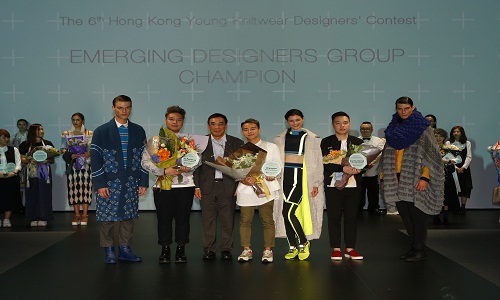
In alignment with the theme, KIDS invited local knitwear brand Roku to showcase its new collection for the first time. Popular pop composer and singer Hins Cheung was appointed as the Knitwear Ambassador to support local fashion design industry and young designers.
The judging panel comprised well known professionals including Ikuto Umeda , CEO of the Shima Seiki Hong Kong Limited Company, Joanna Ho, the famous local fashion designer, Ching Siu Wai, Publisher of City Magazine, Alex Lai, GM, Australia Wool Innovation Ltd, HK, Elsa To, CEO and GM, Cocktail Select Shop, Leung Wai Ping, President ,LF fashion and Anthony Keung, President, Knitwear Innovation and Design Society.
The contest was divided into two teams: “Emerging Designers” and “Graduated Designers”, with 12 final contestants competing for the champion and runner ups. Kenneth Yeung (Dormant Scars) was announced champion in ‘Graduated Designers’, while Christy Lee (Floating in the Air) and Zepar Siu (Reflection) were first and second runners up. In Emerging Designers, Jonathan Yip (Get Your Map Citizen!) was the Champion and Kenneth Tsang (Memory Fragment) and Wayne Lo (Urban Escape) were the first and second runners up. The Best Designer Award (COCKTAIL) went to Zepar Siu and Shima Seiki award went to Kenneth Yeung, while the Best Use of Australian Merino Wool Award (Woolmark) went to Joan Lam.
KIDS, aims to promote local knitwear culture and bring in new inspiration to the local fashion industry. With this in mind, Knitwear Symphony 2016 and the 6th Hong Kong Young Knitwear Designers’ Contest provide a platform for young designers to showcase their talent and creativities, paving the way for sustainable growth of local knitwear industry.
"For decades, China has been a global leader in textiles and apparel supply chain however, of late the country has been facing major challenges regarding market demand and supply. The global supply chain dynamics is changing across the world as new trade policies are coming up and the emerging sourcing hubs in the global map. To retain its lead in the global demand supply chain, China, now has to deal with various challenges which include rising labour costs and scarcity of skilled labour in certain areas.China braces to cope with new competition."

For decades, China has been a global leader in textiles and apparel supply chain however, of late the country has been facing major challenges regarding market demand and supply. The global supply chain dynamics is changing across the world as new trade policies are coming up and the emerging sourcing hubs in the global map. To retain its lead in the global demand supply chain, China, now has to deal with various challenges which include rising labour costs and scarcity of skilled labour in certain areas.China braces to cope with new competition
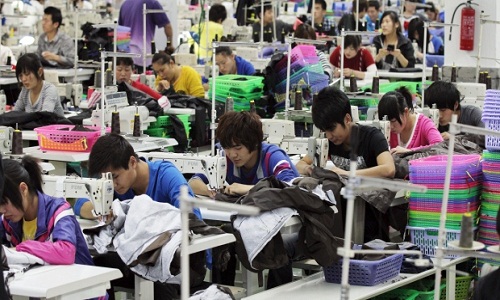
Internationally global marketers are shifting locations of manufacturing looking for lower cost and cheaper labour. Although even few decades back China was a dream destination for manufacturers for skilled labour at low cost, but the story is different now. The generation of skilled, low cost labour in China is gone. The younger generations of china’s labour force are better educated and skilled. Moreover many were born at the times of “one child per family” policy in China. The mindset of the new generation of work force is quite different and also more demanding. Adding to this China is constantly facing labor shortage in coastal provinces seriously.
Hence, with increasing labour cost in China, it is losing the competition to other Asian countries such as Vietnam, Pakistan and Bangladesh. China’s textile exports have declined. For the first time in six years, in 2015, China textile exports fell, dropping 5 per cent per cent to $286.8 billion. Exports to the EU fell 10.6 per cent year-on-year and to Japan by 12 per cent. Exports to ASEAN countries fell 1.7 per cent, according to China customs data. The biggest competitor to China in ASEAN region now is probably Korea, India, Vietnam and Cambodia, etc. Among them, India is another major player in the global textile industry, the country expects its textile and apparel exports to reach $80 billion by 2020. A number of apparel retail brands such as Italian luxury brand Canali, British brand Superdry and American brand Tommy Hilfiger have invested in long-term growth in India. Similarly, Vietnam is still one of the fastest growing textile and apparel producers with growth from 2005-2012 of 28.1 per cent for textile exports and 17 per cent for apparel, of around 5,000 factories in the sector, almost 4,500 are garment producers.
Despite challenges, China’s retains lead
Despite rising labor costs, RMB appreciation and lower demand from export markets, China’s textile and apparel industry are still growing at a healthy pace and looks to dominate the global apparel sector, both as a producer and a consumer for years to come. China Textile and Apparel Industry Report 2016-2019 reveals that the country will continue to remain the leading textile and apparel sourcing country. In immediate future there is no one to overtake China in terms of scale, infrastructure, efficiency, expertise and stability. With the country’s long history and culture of textile development and despite government initiatives to reduce the focus on low-end manufacturing, China’s textile and garment industry still produces more than 40 percent of global textile and apparel exports and it still has the major share in the global textile and clothing trade .
Fast fashion brands may be out to kill the planet, an investigation has revealed. Clothes which are processed and got to the market as fast as possible (a model favoured by H&M, Zara's, and Forever 21) come at a very high environmental cost, with millions of tons of clothes ending up in trash bins, incinerators and landfills.
Going by the practice of popular clothing chains trying to cover up the environmental impacts, H&M had announced in April that it was accepting used clothes as donations from customers that they would recycle to create a new fiber and thus new clothes. However, only 0.1 per cent of all clothing received by charities and programmes that recycle clothes is actually recycled, H&M's Development Sustainability Manager Henrik Lampa admitted.
Fast-fashion outlets are worsening the problem because very few secondhand stores or websites selling used clothes such as thredUP accept items purchased from Forever 21 and other stores due to their poor quality. This means more unwanted clothing is adding to the national trash pile.
Fast fashion is the second dirtiest global industry after oil. Since 2011, Greenpeace has been running its Detox campaign to urge global fashion production houses to eliminate hazardous chemicals from clothes. The problem is further worsened by the increased speed of trend turnover. The fast-fashion outlets are changing trends very quickly to stimulate more sales due to their quick and voluminous output. This means that recent purchases will go out of style sooner than ever before. This indicates that there would be more clothes in the trash bin.
Natural fibers including silk, linen, cotton and semi-synthetic fibers (modal, rayon and Tencel) have a similar decomposition process to food which yields methane. But it's impossible to compost these clothes. Other materials are acrylic, nylon and polyester. Since these have a petroleum base, it could take many hundreds of years to fully decompose.

